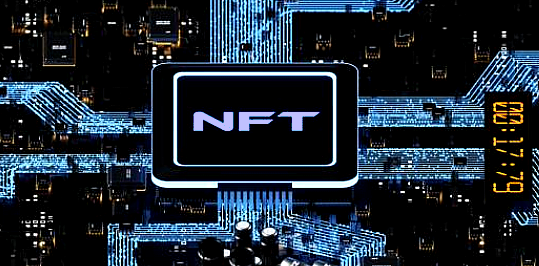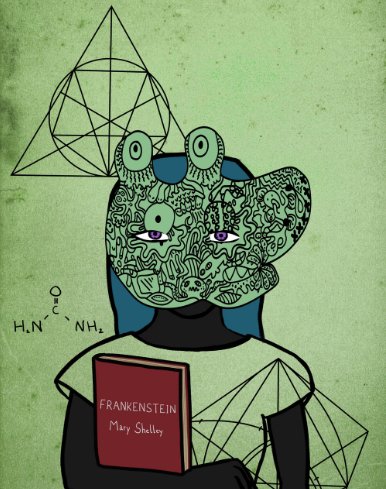Accredited InvestorsAltcoinAnatoli UnitskyAnti-Money Laundering (AML) In CryptoAPIArbitrageArtCoin TokenArticle DirectoryASICAuction Terminology GlossaryBasics of Stock Market InvestingBear MarketBest Crypto Payment Provider In the WorldBitcoinBlockchainBlockchain ConfirmationBlockchain Consensus MechanismBlockchain ForkBlockchain GlossaryBored Ape Yacht ClubBuild a Business That OutperformsBull MarketBuying SkyWay SharesByzantine Fault Tolerance (BFT) ExplainedCasascius CoinCentral Bank Digital Currency (CBDC)Centralized Crypto ExchangeCoinCoinsetCold WalletCollateralCommodity Futures Trading Commission (CFTC)Cross-Chain TechnologyCRUCrypto ExchangeCrypto GlossaryCrypto JokesCrypto Terms to KnowCrypto TickerCryptocurrencyCryptographyCryptojackingCryptounit BlockchainCryptounit GlossaryCryptounit ProgramdApp (Decentralized Application)Dead CoinDecentralized Exchange (DEX)Decentralized Finance (DeFi)Difference Between Bitcoin and EthereumDifferent Ways of Investing MoneyDigital CurrencyDistributed LedgerDo Your Own Research (DYOR)Dollar Cost Averaging (DCA)Dow Jones Industrial Average (DJIA)EncryptionERC-20ERC-721EthereumEvoScentFear Of Missing Out (FOMO)Fear, Uncertainty and Doubt (FUD)Fiat MoneyFNT Fintech CompanyGenesis BlockGlobal Unit PayGlossary of Banking TermsGlossary of Business TermsGlossary of Financial TermsHalvingHODLHot WalletHow Do I Start InvestingHow Rich is Satoshi Nakamoto?How to Create a BlockchainHow to Find Private InvestorsHow to Get Into FintechHow to Program Smart ContractsI Am Thrilled to Be a Part of This Global ProjectInitial Coin Offering (ICO)Initial Public Offering (IPO)Initial Token Offering (ITO)Innovation Basalt TechnologyInnovative Transportation TechnologiesInternational Bank Account Number (IBAN)Investing in Gold Mining StocksInvesting in Gold MiningJagerJoy of Missing Out (JOMO)Know Your Customer (KYC)LedgerLiquidity in CryptocurrencyMaker and Taker Fees in Crypto TradingMarket Capitalization (Market Cap)Meme CoinMetal Credit CardMetaMaskMillenials Now Have Access to Generational WealthMy Best Investment EverNew Digital EvolutionNFT GlossaryOff-Chain TransactionsOn-Chain TransactionsOpen Edition NFTPeer-to-Peer (P2P)Personal Loan GlossaryProbably the Best STO on the MarketProof of Stake (PoS)Real Estate Glossary of TermsReal Estate Investing GlossaryRebase TokenSecurities and Exchange Commission (SEC)Security Token ExchangesSecurity Token Offering (STO)Soulbound Decentralized Identities for Security TokensSoulbound ID Launch by Stobox Proves a SuccessSoulbound TokensStoboxStock Market GlossaryTestimonialsTether Platform and Token (USDT)UnitEx ExchangeUnitsky String TechnologiesUNTBUSDUValidatorWe Started Investing When We Were 25What are Blue Chip NFT?What are Blue Chip Stocks?What are Crypto Assets?What are Crypto Smart Contracts?What are CryptoPunks NFT?What are Digital Assets?What are Digital Collectibles?What are Gas Fees?What are Gas Wars?What are Hashmasks?What are Non Fungible Tokens?What are Non-Sufficient Funds (NSF)?What are Soulbound Tokens (SBT)?What are Stablecoins in Crypto?What are Transactions Per Second (TPS)?What are Utility NFTs?What are Utility Tokens?What Does Burning Crypto Mean?What Does Diamond Hands Mean?What Does Paper Hands Mean?What Does To The Moon Mean?What Does WAGMI Mean?What Happened to Satoshi Nakamoto?What is a 51% Attack?What is a Baby Boomer?What is a Backlink?What is a Banner?What is a Barcode?What is a Bid-Ask Spread in Crypto?What is a Block in Blockchain?What is a Block Reward?What is a Blockchain Address?What is a Blockchain Node?What is a Blockchain Oracle?What is a Blog?What is a Bond?What is a Bot?What is a Broker?What is a Business Accelerator?What is a Cash Cow?What is a Commercial Bank?What is a Commodity?What is a Con?What is a Credit?What is a Credit Limit?What is a Credit Rating?What is a Crypto Airdrop?What is a Crypto Bridge?What is a Crypto Scam?What is a Crypto Token?What is a Crypto Wallet?What is a Crypto Whale?What is a Crypto Winter?What is a Cryptocurrency Public Ledger?What is a Cryptocurrency Roadmap?What is a DAO?What is a Dark Pool?What is a Day Trader?What is a Dead Cat Bounce?What is a Default?What is a Derivative?What is a Digital Credit Card?What is a Fiscal Quarter?What is a Fungible Token?What is a Governance Token?What is a Grace Period?What is a Hard Fork?What is a Hot Wallet?What is a Hybrid Blockchain?What is a Hybrid PoW/PoS?What is a Joint Account?What is a Market Cap?What is a Merkle Tree in Blockchain?What is a Mining Farm?What is a Nonce? What is a PFP NFT?What is a POS System?What is a Prepaid Card?What is a Private Blockchain?What is a Private Key?What is a Public Blockchain?What is a Public Key?What is a Reserve Currency?What is a Ring Signature?What is a Routing Number?What is a Rug Pull in Crypto?What is a Safe Deposit Box?What is a Satoshi?What is a Security Token?What is a Seed Phrase?What is a Shitcoin?What is a Sidechain?What is a Soft Fork?What is a Spot Market?What is a State Bank?What is a SWIFT Code?What is a Tax Identification Number (TIN)?What is a Time Deposit?What is a Transaction Account?What is a Variable Interest Rate?What is a Virtual Assistant (VA)?What is a Virtual Card?What is a Virtual Currency?What is a Visa Card?What is a Whitelist in Crypto?What is a Whitepaper?What is Accounts Payable (AP)?What is AMA in Crypto?What is Amortization?What is an Accrual?What is an ACH Transfer?What is an Actuary?What is an Addendum?What is an Algorithm?What is an Angel Investor?What is an Annuity?What is an Asset?What is an ATM?What is an Atomic Swap?What is an Audit?What is an Avatar?What is an EIN?What is an Embargo?What is an Entrepreneur?What is an IDO (Initial Dex Offering)?What is an Interest Rate?What is an Internet cookie?What is an Investment Bank?What is an NFT Drop?What is an NFT Floor Price?What is an Ommer Block?What is an Orphan Block?What is an Outstanding Check?What is an Overdraft?What is Artificial Intelligence (AI)?What is B2B (Business-to-Business)?What is B2G (Business-to-Government)?What is Bartering?What is Bitcoin Dominance?What is Bitcoin Pizza Day?What is Blockchain Immutability?What is Blockchain Used For?What is BRICS?What is Business-to-Consumer (B2C)?What is C2C (Customer to Customer)?What is Capitalism?What is Catfishing?What is CFD Trading?What is Check Kiting?What is Cloud Mining?What is Communism?What is Content Marketing?What is Decentralization in Blockchain?What is DeFi in Crypto?What is Delisting?What is Depreciation?What is Digital Marketing?What is Diversification?What is Double Spending?What is Dumb Money?What is Dumping?What is Earnings Per Share (EPS)?What is Economics?What is Email Marketing?What is Equity?What is Etherscan?What is Fintech?What is Foreign currency?What is Forex?What is Fundamental Analysis (FA)?What is GameFi?What is Generative Art NFT?What is Gwei?What is Hard Currency?What is Hash Rate?What is Hashing in Blockchain?What is Inflation?What is Initial Game Offering (IGO)?What is Interest?What is Interest Income?What is Mainnet?What is Mastercard?What is Metaverse in Crypto?What is Mining in Cryptocurrency?What is Minting NFT?What is Mobile Banking?What is Money Laundering?What is NFT Alpha?What is NFT Metadata?What is NFT Rarity?What is NGMI Meaning?What is Nominal Interest Rate?What is Online Banking?What is Open-End Credit?What is OpenSea NFT Marketplace?What is Personal Identification Number (PIN)?What is Play-to-Earn?What is Polygon?What is Proof of Authority (PoA)?What is Proof of Work (PoW)?What is Public Key Cryptography?What is Pump and Dump?What is Quantum Computing?What is Refinancing?What is Retail Banking?What is Ripple?What is Sharding?What is Slippage in Crypto?What is Smart Money?What is Solvency?What is Soulbound ID?What is SSL?What is Staking in Cryptocurrency?What is Technical Analysis (TA)?What is Testnet?What is the Ask Price?What is the Better Business Bureau (BBB)?What is the Bid Price?What is the Dark Web?What is the InterPlanetary File System (IPFS)?What is the Gold Standard?What is the Lightning Network?What is the Prime Rate?What is the Sandbox?What is the Secondary Market?What is the World Bank?What is Tier 1 Capital?What is Tokenomics?What is TRC-20?What is Universal Banking?What is Unspent Transaction Output (UTXO)?What is Usury?What is Volatility in Crypto?What is Wash Trading?What is Web3?What is Whisper?What is XRP?What is Zero-Knowledge Proof (ZKP)?Who is Beeple?Who is Satoshi Nakamoto?Who is Vitalik Buterin?Why Tokenization is a Safe HavenWhy You Should Try Your Hand at Trading
What is NFT Rarity?
- Home
- NFT Glossary
- What is NFT Rarity?
Although it is not as simple as it appears, NFTs have proven to be a lucrative opportunity for creators and collectors alike.

As an alternative means of generating income, numerous artists have turned to NFTs, resulting in a saturated market with many questionable projects. Consequently, collectors now meticulously evaluate crypto art with superior characteristics and stronger marketability, commonly referred to as NFT rarity.
What is NFT Rarity?
NFTs are unique digital assets, each representing a one-of-a-kind piece of artwork or collectible. While the concept of NFTs is relatively straightforward, the value of these assets is heavily influenced by their rarity. In other words, the more unique an NFT is, the more valuable it becomes.
So, what makes an NFT rare? There are several factors that collectors and investors consider when evaluating the rarity of an NFT.
First and foremost, the scarcity of the artwork is a significant factor. The fewer copies of an NFT in circulation, the more valuable it becomes. For example, if an artist only releases ten copies of their NFT, it is considered far more rare than an NFT that has thousands of copies in circulation.
The quality of the artwork is another important consideration. A well-crafted piece of digital art will often be more valuable than an NFT with low-quality graphics or design. Collectors are looking for NFTs that stand out from the crowd, whether that's due to the level of detail or the artist's unique style.
Another factor to consider is the reputation of the artist. Established artists with a track record of creating high-quality, sought-after pieces will typically command higher prices for their NFTs. On the other hand, new or unknown artists may struggle to generate interest in their work, even if it is of exceptional quality.
Finally, the demand for an NFT is a significant factor in determining its rarity. If there are many collectors competing for a limited number of NFTs, the value of those assets will increase. This is why some NFTs have sold for millions of dollars, as collectors vie for a piece of digital art that is both unique and highly sought-after.
What is an NFT Rarity Checker?
An NFT rarity checker is a tool or service designed to help users evaluate the rarity of a non-fungible token.
To assess the rarity of an NFT, the calculator examines various features of the token, including its properties, metadata, and characteristics. For example, an NFT rarity checker may evaluate the visual aspects of an NFT, such as its color scheme, pixel density, or other distinguishing features.
Alternatively, an NFT rarity checker may analyze the demand for a specific NFT or the number of copies of the token currently on the blockchain to determine its rarity. The following steps are typically followed by an NFT rarity calculator:
- Identify the NFT: The calculator first needs to identify the NFT being assessed, which may involve entering the token ID or other identifying information.
- Collect data: The calculator then gathers information about the NFT, such as its characteristics, sales performance, and blockchain data.
- Analyze attributes: The calculator evaluates the NFT's properties, including its visual and other distinguishing features.
- Assess rarity: Based on the information gathered and the examination of the NFT's characteristics, the calculator uses algorithms to determine its rarity. The NFT may be compared to other tokens in the same collection, and sales information and market trends may also be considered.
- Provide results: The calculator presents a numerical evaluation of the NFT's rarity, typically in the form of a score or rating, which can help buyers and sellers estimate its value.
There is no single formula for calculating the rarity of nonfungible tokens (NFTs), as determining rarity can depend on various factors and characteristics specific to each NFT. Rarity can be evaluated through a combination of quantitative and qualitative analysis of features such as scarcity, uniqueness, demand, and historical significance.
Different NFT rarity calculators and tools may use different algorithms and methods to assess these factors and generate a numerical score or rating for an NFT's rarity. However, it is important to note that these calculators are not always accurate and that other market factors such as buyer sentiment and current market trends can also influence the rarity and value of an NFT.
Approaches to Calculating NFT Rarity Rankings
Determining the rarity of nonfungible tokens (NFTs) can be complex, with various factors and characteristics specific to each NFT. Depending on the number of editions or copies, demand within the marketplace, and other factors, different approaches can be used to generate NFT rarity rankings.
One common method is algorithmic scoring, where an algorithm rates each NFT based on criteria such as rarity, qualities, popularity, and provenance. Another approach is comparative analysis, where each NFT is compared to others in the same category, taking into account variables such as scarcity, qualities, sales history, and market trends.
Data analysis, such as sales data or social media mentions, can also be used to rank NFT rarity. Additionally, community feedback from collectors, creators, and specialists can influence NFT rarity rankings. It is important to note that different platforms and markets may use varying formulas and algorithms, and that market factors can also influence NFT rarity and value.
NFT Rarity Scores: What Do They Mean?
The meaning of NFT rarity scores can be ambiguous and dependent on several factors, including the NFT collection, the attributes being measured, and the current market conditions. Although a high rarity score may suggest a scarce nonfungible token, there is no definitive standard for determining what constitutes a “good” score.
Moreover, rarity scores can be influenced by various subjective factors, and they do not always equate to high resale value or price. For instance, the artist's fame, cultural relevance, and historical significance can all impact an NFT's value. Therefore, while a high rarity score can indicate a unique and valuable NFT, it is important to consider other factors when determining an NFT's value.
Related Articles
What is an Avatar?
Each character has its own distinct appearance, and some have become highly valuable due to their rarity or unique features.

What is an NFT Drop?
It's important to look beyond the buzz surrounding a particular NFT and evaluate its intrinsic value, rarity, and potential for...

What are Utility NFTs?
Unlike traditional NFTs that are primarily collectibles, utility NFTs are functional and provide a practical use case beyond their inherent rarity and uniqueness.

Open Edition NFT
Early collections of profile pictures, such as CryptoPunks or Bored Ape Yacht Club, have introduced rarity traits to their collections, making some NFTs more...

What is an NFT Floor Price?
Other factors that can affect the NFT floor price include the rarity of the asset, its utility (i.e. what it provides in the real world), its ownership history, and its...

Bored Ape Yacht Club
The rarity of each NFT is determined by the number of attributes it possesses and the level of detail in the artwork.

What are Hashmasks?
This type of rarity is based on the hierarchy of rarity features that the creator chooses for their artwork. For example, a Hashmasks NFT with a robot feature is rarer than...
- Home
- NFT Glossary
- What is NFT Rarity?